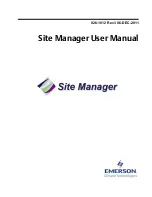
NOTE:
To have secondary image trails, you must add them after initialization and before RDF
has been started for the first time. Also you cannot add secondary image trails until you have
configured the receiver, as described in the previous paragraphs. The secondary image trail files
have the same extents as the master image trail files. To delete a secondary image trail, you must
stop RDF, delete any updaters associated with the particular trail, and then delete the trail.
Normally, you should never delete a secondary image trail until RDF has completely caught up
with TMF.
To add one secondary image trail to the volume named $IMAGA1 and another to the volume
named $IMAGA2, issue the following commands:
]SET IMAGETRAIL ATINDEX 0
]ADD IMAGETRAIL $IMAGA1
]SET IMAGETRAIL ATINDEX 1
]ADD IMAGETRAIL $IMAGA2
Dedicated Image Trails or Image Trails on UpdateVolumes
The master image trail (MIT) should always be placed on an image trail not used by any updaters.
For secondary image trails, however, you have two options. If your peak time audit generation
rates for RDF-protected data on a given audit trail are generally in the range of 1 to 3 megabytes
of audit per second, the number of updaters you need does not exceed 30, and you normally run
with Update ON, you may be able to configure one image trail per updater and place that
imagetrail on that updater's UPDATEVOLUME. You should have sufficient disk space to hold
both your database files as well as the image trail. When determining if you have sufficient disk
space on the UPDATEVOLUME, you should consider size of individual image trail files and the
configured value of the purger's RETAINCOUNT, and you should consider worst-case situations
where an updater might fall way behind, in which case there might be a large number of image
files on that UPDATEVOLUME.
Alternatively, you may find that you can configure a small number of dedicated image trails
and configure a large number of updaters to each dedicated trail provided that the volume of
audit being written to the trail is generally less than 5 megabytes per second. For high volume
throughput where the volume of RDF-protected data in an audit trail exceeds 5 megabytes per
second, for optimal extractor-to-receiver throughput as well as for optimal updater throughput,
it is recommended that you always use dedicated image trails and that you configure no more
than 3 or 4 updaters per image trail.
As you can see from this discussion, there are many combinations one can achieve, depending
on the volume of audit being generated per datavol on the primary system and the number of
updaters you configure to an image trail. The recommendations provided above are no more
than general recommendations. Each customer's environment differs. When you are ready to
configure your image trails, you need to consider carefully the different considerations raised
above.
Setting Trigger Attributes
RDF offers two types of triggers, where a trigger is typically a user-generated script of operations
that are automatically executed upon the completion of a specific event. The two types of triggers
are the REVERSE trigger and the TAKEOVER trigger. The REVERSE trigger is executed by RDF
only for a STOP RDF, REVERSE operation, and it is executed immediately after RDF stops. The
TAKEOVER trigger is executed immediately upon the successful completion of an RDF takeover
operation.
Use SET TRIGGER and ADD TRIGGER commands to configure the following trigger attributes:
•
PROGRAM
•
INFILE
•
OUTFILE
Initializing and Configuring RDF
89
Содержание NonStop RDF
Страница 68: ...68 ...
Страница 186: ...186 ...
Страница 260: ...260 ...
Страница 278: ...278 ...
Страница 284: ...284 ...
Страница 290: ...290 ...
Страница 308: ...308 ...
Страница 322: ...322 ...
Страница 336: ...336 ...
Страница 348: ...348 ...
Страница 464: ...464 ...
Страница 478: ......
















































